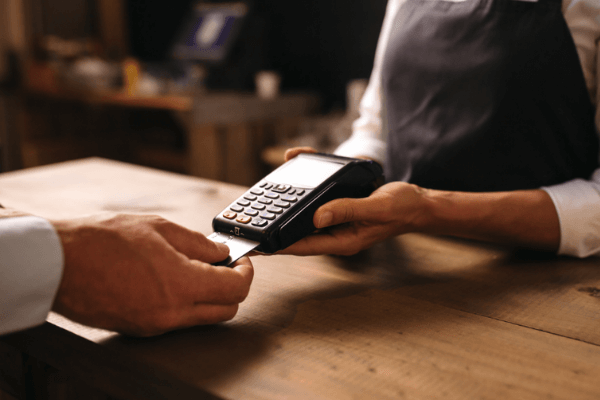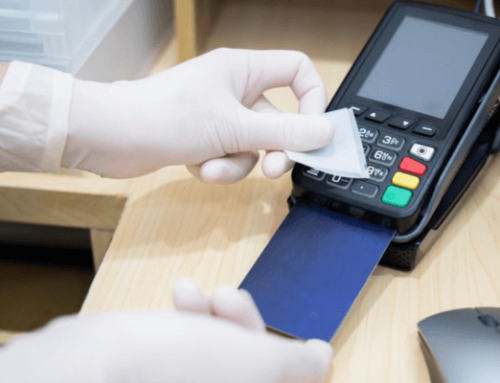
Who looks at a Automatic Payment Terminal (TPA), such as REDUNIQ EasyA POS machine that allows small businesses to accept card payments (Visa and Mastercard) at a fixed and controlled cost, or for the REDUNIQ Smart, a TPA Android with contactless technology which, among other things, allows businesses to incorporate apps for management In order to reach this point of technological innovation, a long road had to be travelled.
The history of the POS: from the magnetic card to the contactless system
- 1950launch of the first bank cards;
- 1970: birth of the first automatic payment terminal in the USA;
- 1986UNICRE creates the Redunicre brand (the largest payment acceptance network in Portugal);
- 1990The first electronic payment terminals were installed in the country;
- 1997UNICRE, in partnership with Visa International, is launching a campaign to encourage tourists to use their Visa cards in Portuguese businesses - "Portugal Welcomes Visa";
- 2010: development of payment terminals with contactless technology;
- 2023REDUNIQ Soft: innovation in the payments sector with the launch of REDUNIQ Soft, which makes it possible to accept payments on your smartphone.
Now, put on the skin of a palaeontologist and discover a little more about the evolution of automatic payment terminals throughout history.
1950s: Launch of the first bank cards
If the development of automatic payment terminals is linked to payment cards, the first twenty years after Diner's Club International and American Express launched the first bank cards in history (the 1950s) were marked by a type of terminal that was "slightly" less automatic than the one we know so well today.
Unlike today's POS terminals, card reading back then was done without using the Internet and with the aid of chemical paper. Yes, you read that right, chemical paper.
The cards were embossed with all the financial information needed to carry out a transaction. At the time of payment, the embossed information was then printed on a receipt with carbon paper for the deal, which would then have to be signed by the customer and sent to the banks.
Although physical cash was not used, the process was not very automatic and was very manual, clearly losing out to cash transactions.
1970s: birth of the "truly" automatic payment terminal
It took almost two decades for carbon paper printing to give way to the first automatic payment terminal in history.
Who invented the TPA?
It all came about thanks to Forrest Parry, an IBM engineer who, at the end of the 1960s, had the idea of attaching a piece of magnetic tape to a plastic card. After a few attempts, the first prototype credit card as we know it was born in 1969.
IBM enthusiastically embraced the idea and set about perfecting the way the magnetic stripe would incorporate customer information:
- the cardholder's name
- the card code
- information on authorisations
- the card's expiry date
After realising the potential, he set about developing a validation terminal that could "read" them simply and effectively.
This "endeavour" came to a happy end in 1971, when the IBM 360, a system that made it possible to independently configure external peripherals such as hardware and printers, enabled the first card readings in history, thus inaugurating the era of electronic payment terminals.
Two years after this experiment, the United States created the first electronic transaction authorisation system in California, which served to connect businesses to a data centre, streamlining a payment process that, despite the evolution of the TPAIn addition, it required the customer to authenticate the transaction by signing a receipt issued by the shopkeeper.
Evolution was already unstoppable and, in 1977, the first wireless payment terminal appeared in Norway. Authored by Telenor Mobile, this terminal made it possible for vendors to accept bank card payments anywhere: in food carts, at fairs and even on beaches.
The 80s and 90s: automatic payment terminals arrive in Portugal
After a decade of considerable advances in the technology that underpins automatic payment terminals, the 1980s and 1990s saw not only the dissemination of the TPA with the Visa and Mastercard symbols, as witnessed by the arrival of the first debit card issued in Portugal and the installation of the first automatic payment terminals in Portuguese shops.
It all begins in 1986, when UNICRE - Financial Credit InstitutionS.A., created the Redunicre brand, a payment acceptance network that would start accepting the first debit card issued in Portugal in commercial establishments.
At the dawn of the 1990s, this same Redunicre, now REDUNIQ, ended up making history by installing the first Electronic Payment Terminals in Portuguese shops.
In the early 1990s, the first electronic payment terminals were installed nationwide.
While until then the terminals had been used mainly for payments from Portuguese customers, from 1997 onwards Unicre, in partnership with Visa International, launched a tremendous tourism campaign in which Portugal was perceived as a tourist destination of choice and which encouraged tourists to use their Visa cards in Portuguese businesses - "Portugal Welcomes Visa".
Contactless technology: the start of the digital payments revolution
It's 2010, the beginning of the second decade of the 21st century. Like a matrioska, the RFID technology used in anti-theft devices ends up being extracted from the NFC technology (Near Field Communication) which is proving to be fundamental for the development of the Contactless TPA.
By allowing information to be transmitted to a device at a distance, the incorporation of NFC into POS devices ushers in the era of the contactless payments (contactless) by simply bringing the bank card close to the payment terminal.
Innovation in the payments sector with the launch of REDUNIQ Soft
Always at the forefront of innovation in the payments sector and attentive to business needs at a time of digital transition, in February 2023 REDUNIQ launched the REDUNIQ Soft, a payment solution that allows any business to accept payments without a terminal, quickly and easily, via an App on a smartphone or tablet.
In October 2023, nine months after the launch of this solution, REDUNIQ received the ACEPI Navegantes XXI Award in the category "Best Digital Evolution Project in Proximity Commerce“.
This recognition was awarded during the Portugal Digital Summit 2023, an event that highlighted a total of 20 projects and institutions that contribute to the digital transformation and innovation of the economy and society in Portugal.
REDUNIQ: leading the way in POS payment technology
With the improvement of mobile devices, the contactless is no longer just a feature of bank cards and is now also on the smartphones of consumers all over the world, revolutionising not only the way people pay but also, and above all, the role of the payment terminal in the purchasing journey.
This last change is perfectly visible in the REDUNIQ Smart terminal which we mentioned at the beginning of the article. As well as allowing payments by card or smartphone, with Contactless, chip, MB WAY, Apple Pay or Google Pay, this Android terminal gives businesses the chance to develop apps tailored to your business and the needs of their customers in the TPA.
This includes, for example, applications that allow stock to be consulted and managed in real time, orders to be placed with suppliers, fleet management via GPS, the presentation of menus or products to the customer or invoicing from the terminal itself, making businesses completely mobile and digital in line with the new consumer profile emerging from the pandemic.
Other payment solutions, also mentioned in this article, are o REDUNIQ EasyA terminal designed for seasonal businesses or those with low turnover, where you can pay a monthly fee adjusted to the turnover of the business, with a free terminal, with transactions included, without having to worry about fees for each purchase made.
This terminal allows businesses to accessecept "traditional" payments with credit and debit cards (Visa and Mastercard brands) via PIN, Contactless e MB WAY.
As mentioned above, the technological evolution of POS payments saw the birth of the REDUNIQ Soft, a solution that allows any business to accept payments on their smartphone by NFC, QR Code e Contactless quickly and easily via an App.
While this in itself demonstrates an unimaginable evolution for those who, 50 years ago, were developing the first TPA prototype, we mustn't forget the other services that can be associated with the terminal, such as the DCC - Currency Conversion.
In a simple and practical way, REDUNIQ's DCC service can be incorporated into any of its terminals, allowing businesses, especially those linked to tourism, to accept payments in foreign currency and receive a financial incentive for doing so.
It's hard to say what the future holds for Automatic Payment Terminals, but with society moving towards becoming structurally "cashless" (without physical money), the next chapter in the history of the TPA promises to be something to talk about.


